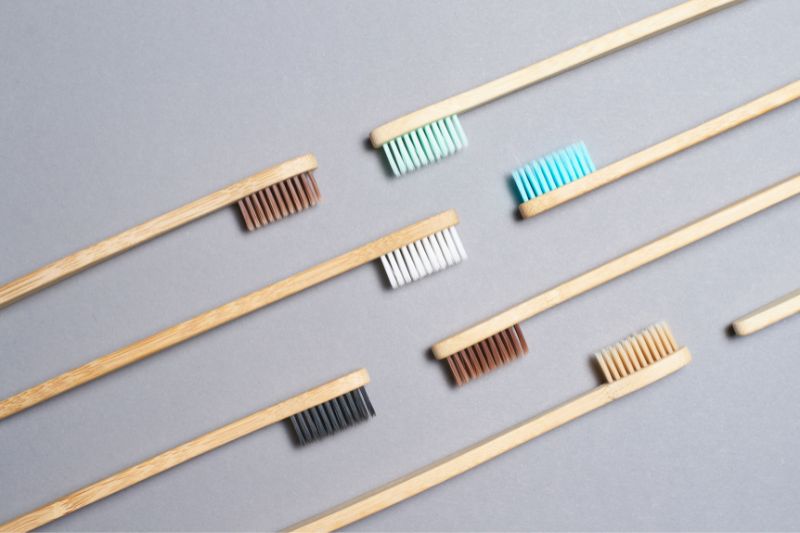You might be surprised to learn that a seemingly insignificant item like a toothbrush can spark curiosity. After all, a toothbrush is something you use every day, and you may have wondered at some point, “How much does a toothbrush weigh?” It’s quite normal to ponder over simple everyday objects, and we’re here to help you find the answer to this question.
When it comes to toothbrushes, various types are available on the market, including manual, battery-operated, and electric ones. Each has a different design, material, and weight, which can affect their overall effectiveness.
In this article, we will explore the various weight ranges of different toothbrushes, giving you a better understanding of this humble but essential item in your daily routine.
Read: How Much Does a Magazine Weigh? (Answered)
Standard manual toothbrushes weigh around 15-20 grams (0.5-0.7 ounces). Plastic toothbrushes usually weigh between 14-18 grams (0.49-0.63 ounces). Bamboo toothbrushes weigh slightly more than plastic toothbrushes, with an average weight of 17-22 grams (0.6-0.77 ounces). Metal toothbrushes tend to weigh between 20-30 grams (0.7-1.05 ounces).
Measuringly.com
How Much Does a Toothbrush Weigh?
When it comes to the weight of a toothbrush, there are several factors to consider. Most toothbrushes on the market are lightweight and manageable, allowing easy and effective brushing.
Standard manual toothbrushes weigh around 15-20 grams (0.5-0.7 ounces). The material they are made of, such as plastic, bamboo, or metal, significantly affects the toothbrush’s weight. The design of the handle, choice of bristles, and size of the brush head can also affect the overall weight.
- Plastic toothbrushes are the most common type and are typically the lightest. They usually weigh between 14-18 grams (0.49-0.63 ounces).
- Bamboo toothbrushes weigh slightly more than plastic toothbrushes, with an average weight of 17-22 grams (0.6-0.77 ounces). Despite the slight increase in weight, bamboo is known for its eco-friendliness and biodegradability.
- Metal toothbrushes, usually made of stainless steel or aluminum, tend to be the heaviest of the manual toothbrushes. These can weigh between 20-30 grams (0.7-1.05 ounces). They have the advantage of being durable and long-lasting.
In contrast to manual toothbrushes, electric toothbrushes are relatively heavier because of the additional components such as the motor, battery, and sometimes additional features. An electric toothbrush often weighs between 100-200 grams (3.5-7 ounces), depending on the brand and features.
While the weight of a toothbrush might seem insignificant, it’s essential to find one that feels comfortable in your hand. If you’re concerned about the weight or have difficulty with holding a heavier toothbrush, consider trying a lighter option or discussing your needs with a dental professional.

Factors Affecting Toothbrush Weight
When choosing a toothbrush, the weight of the brush may be an important factor for you. Various elements contribute to the weight of a toothbrush, such as its material, size, and extra features. Let’s examine each factor to understand better how they influence the weight of your toothbrush.
Material
The material used to make your toothbrush can greatly affect its overall weight. Toothbrushes are typically made from different plastics and can vary in weight depending on the type. Some common materials include:
- ABS plastic: It’s a common, lightweight, and inexpensive material often used to manufacture toothbrushes. An advantage of using ABS plastic is that it’s easy to mold, ensuring a comfortable grip for you.
- Biodegradable plastics: These eco-friendly materials are gaining popularity due to their reduced environmental impact. Bioplastic toothbrushes might weigh slightly more than those made from ABS plastic, but they provide extra benefits for the planet.
- Bamboo: Bamboo toothbrushes have become popular as an eco-friendly option. Bamboo is lightweight, yet sturdy, making it an ideal material for a toothbrush handle.
Size
The size of your toothbrush will affect its weight. Toothbrushes come in various sizes suitable for different purposes and ages, such as:
- Kids’ toothbrushes: These are smaller and lighter to fit comfortably in a child’s hand, making them easier to handle while brushing.
- Adult toothbrushes: Adult toothbrushes are generally larger and slightly heavier than kids’ toothbrushes, offering a larger brush head for more effective cleaning.
- Travel toothbrushes: These compact brushes are designed to be lightweight and portable for your convenience while traveling.
Extra Features
Modern toothbrushes often come with additional features that can add to their weight. Some of these features include:
- Rubber grip: A toothbrush with a rubber grip can provide a better grip, but it may add a little extra weight to the handle.
- Tongue cleaner: Some toothbrushes have a built-in tongue cleaner on the back of the brush head, which can contribute to the overall weight.
- Battery-operated brushes: Electric toothbrushes have motors and batteries inside their handles, making them heavier than manual ones. However, electric toothbrushes’ effectiveness and ease of use can outweigh their heavier design.
How Heavy is an Electric Toothbrush?
When picking an electric toothbrush, you might be curious about its weight. Good news – most electric toothbrushes are designed to be light and easy to handle. Electric toothbrushes generally weigh around 3.5 to 7 ounces (about 100 to 200 grams). This range considers both lighter models for daily home use and heavier ones with more advanced features.
While choosing an electric toothbrush, consider the type of batteries it uses. Rechargeable ones tend to be a bit heavier due to the built-in battery pack. However, they can save you the hassle of constantly replacing batteries, and you won’t feel the weight difference during your daily brushing routine.
In contrast, battery-operated toothbrushes are lighter since they use replaceable batteries, such as AA or AAA types. Keep in mind that the weight might fluctuate when you change the batteries. Nonetheless, these models also offer effortless handling and are convenient for travel.
To sum it up, an electric toothbrush’s weight varies:
- Rechargeable models: typically between 3.5 to 7 ounces (100 to 200 grams)
- Battery-operated models: generally around 2.5 to 4 ounces (70 to 110 grams)

How Much Does a Bamboo Toothbrush Weigh?
Bamboo toothbrushes are popular for their eco-friendly and sustainable nature. You might be wondering about their weight compared to conventional plastic toothbrushes. They are generally light and portable.
On average, a bamboo toothbrush weighs around 17 to 22 grams. This can vary depending on the handle size, thickness of bristles and overall design. However, this weight range is quite comparable to a standard plastic toothbrush, which usually weighs between 12 and 20 grams.
One reason for the light weight of the bamboo toothbrush is the materials used. Bamboo is a strong, yet lightweight material, which makes it ideal for making toothbrush handles. Not only does this provide a comfortable grip, but it also means you won’t have to worry about it being too heavy for your daily dental routine.
What is the Size of a Toothbrush?
When selecting a toothbrush, you’ll notice they come in various sizes and shapes. Generally, a toothbrush’s size accommodates different age groups and preferences. Adults’ toothbrushes and kids’ toothbrushes will differ in their dimensions.
For an adult toothbrush, the head’s length usually ranges between one and 1.3 inches (25 to 33 mm), while the width is about 0.3 to 0.5 inches (8 to 13 mm). The toothbrush’s length, including the handle, is typically about 6 to 7.5 inches (150 to 190 mm).
On the other hand, a kids’ toothbrush is designed with a smaller head to fit a child’s mouth comfortably. The head’s length is typically 0.8 to 1 inch (20 to 25 mm), and the width is approximately 0.3 inches (7 to 8 mm). The total length, including the handle, ranges from 5 to 6 inches (130 to 160 mm).
Read: How Much Does a Vending Machine Weigh? (Answered)
Toothbrush Weight Comparison
When selecting a toothbrush, you may wonder about the weight difference between various types. Knowing the weight can help you find the most comfortable option. Let’s explore the weight of different toothbrushes.
Manual toothbrushes are usually lightweight, ranging from 15 to 20 grams. They are easy to handle and maneuver in your mouth. Brands and styles may vary slightly, but most fall within this weight range.
Electric toothbrushes are generally heavier due to their motors and batteries. They often weigh between 90 to 180 grams. The weight can affect the brushing experience and may take some time to get used to, especially if you are new to electric toothbrushes.
Travel toothbrushes, designed for portability, tend to be lighter, weighing approximately 10 to 15 grams. They are compact and easy to carry in your luggage, which makes them perfect for your trips.
| Toothbrush Type | Weight Range |
|---|---|
| Manual | 15g – 20g |
| Electric | 90g – 180g |
| Travel | 10g – 15g |







